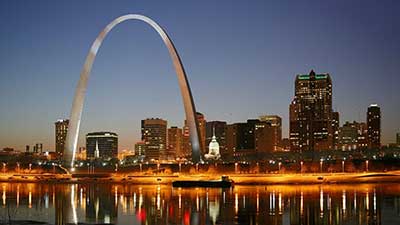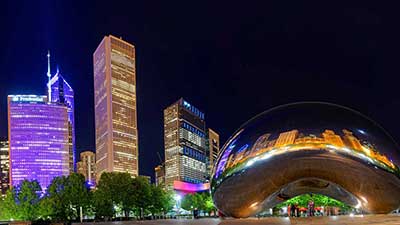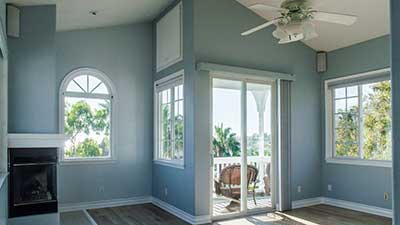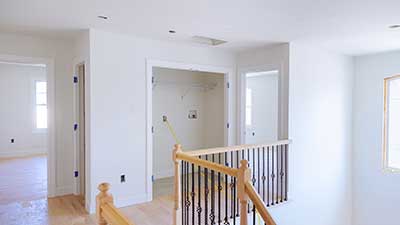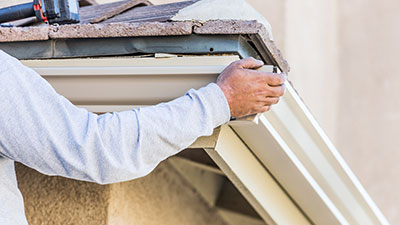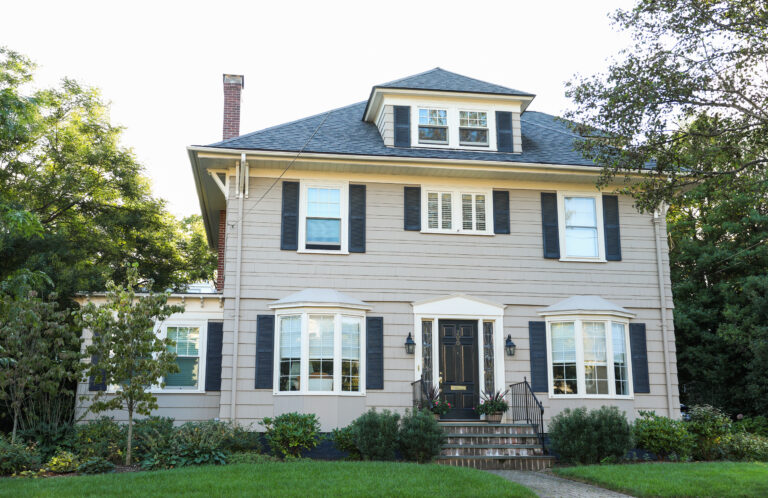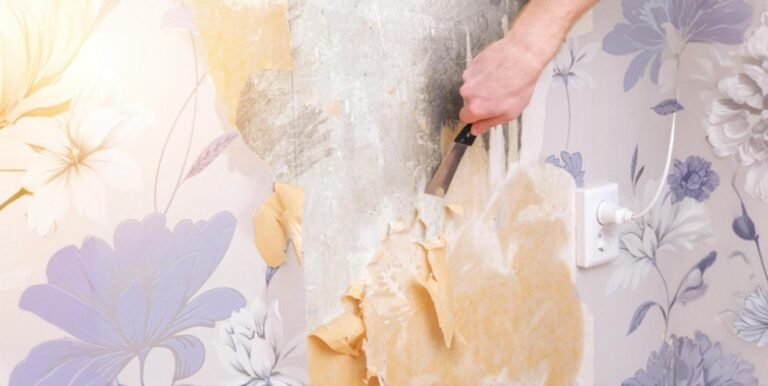Most homeowners think paint is just decoration, but these facts about painting reveal how this everyday material has shaped history, influences your health, and protects your biggest investment in ways you never imagined.
Key Takeaways
- Cave paintings from 40,000 years ago remain visible today, proving quality pigments create lasting results.
- Paint colors literally affect your heart rate – blue calms while red energizes any room.
- The White House uses 570 gallons annually and was originally protected with lime based whitewash.
- A red door meant safe lodging for travelers and Underground Railroad safe houses throughout history.
- Modern smart paints now purify air and heal scratches automatically using advanced technology.
- OnDemand Painters delivers professional expertise that protects your investment and creates beautiful spaces.
1. Cave Dwellers Were the First Spray Painters
Forty thousand years ago, cave dwellers in prehistoric France created the world’s first spray paint using hollow bird bones. They blew pigments made from colored earth, soot, and animal blood onto stone walls, even using their hands as stencils. These cave paintings remain visible today, proving that quality pigments and proper application create lasting results that professional painter teams still admire.
2. The White House Needs 570 Gallons of Paint Annually
The White House gets a fresh coat every year to maintain its iconic appearance and protect the limestone construction. Originally painted with lime based whitewash to prevent moisture damage, the building now requires 570 gallons of advanced paint with UV protection. This massive painting project involves background checks for all painters and careful scheduling around official events.
3. Paint Colors Can Literally Change Your Mood and Heart Rate
Research findings prove that paint colors affect your body chemistry. Blue paint reduces stress hormones and lowers blood pressure, helping you express feelings of calm in any room. Red paint increases heart rate and energy levels, making it perfect for dining areas. Green shades promote emotional balance, while vibrant color choices like yellow boost creativity but can disrupt sleep patterns. Art historians note that royal courts used specific colours to influence visitors’ moods.
4. A Red Door Has Secret Historical Meanings
What the red door meant depended on the era and culture. During America’s frontier period, a red door signaled safe lodging for weary travelers. The Underground Railroad used red door coding to identify safe houses for escaping slaves. Scottish families painted doors red after paying off mortgages, while Chinese culture associates red doors with good luck and prosperity during New Year celebrations.
5. Blue Bathrooms Add $5,000 to Your Home Value
Real estate data shows specific paint colors dramatically affect sale prices. Blue bathrooms increase home values by $5,000 above average, while white bathrooms sell for $4,000 below market value. Blue kitchens outsell yellow ones by $2,600, and brown living rooms bring prices up $1,800. These paint colors create emotional responses that influence buyer decisions and final offers.
6. Medieval Monks Made Paint from Egg Yolks and Gems
During the middle ages, monks created luminous paint by mixing egg yolks with ground semiprecious stones for illuminated manuscripts. This painting technique required extensive knowledge of chemistry and materials. Professional painter guilds like England’s “Worshipful Company of Painters and Stainers” closely guarded these trade secrets, viewing paint formulation as closely linked to their livelihood and status.
7. It Took 4 Million Snails to Make Royal Purple Paint
Ancient Romans needed four million mollusk shells to create one pound of purple pigment, making it incredibly expensive. This cost meant purple became associated with royalty and wealth at royal courts throughout history. The same principle applies today – premium pigments still command higher prices and create superior results on any flat surface.
8. Professional Painter Teams Spend 80% of Time Prepping
Surface preparation accounts for 80% of any quality paint job. Professional painter crews clean, sand, and prime surfaces before applying paint because contaminated surfaces cause paint failure within months. This extensive prep work prevents peeling and cracking, ensuring paint dries properly and lasts for years. Quality preparation separates amateur work from professional results.
9. Green Paint Comes in More Shades Than Any Other Color
Commercial manufacturers offer more green shades than any other color because human eyes distinguish more green variations than other colours. This evolutionary advantage helped early humans identify edible plants and safe environments. Today’s green paint options range from soft sage to vibrant emerald, offering endless design elements for creating natural, calming spaces.
10. Isaac Newton and Plato Invented Color Theory
Greek philosopher Plato discovered that mixing primary colors creates new colours, laying the foundation for modern color theory. Isaac Newton later developed the color spectrum using light and prisms, helping painters understand how colours work together. Their discoveries inspired countless artists and influenced painting techniques still used by professional painter services today.
11. World War II Oil Paint Shortages Created Modern Acrylics
Linseed oil shortages during World War II forced chemists to develop synthetic alternatives, leading to acrylic paint in the 1940s. Before this innovation, painters mixed olive oil and other natural binders by hand. This breakthrough created water based paint formulations that dry faster, clean easier, and offer better durability than traditional oil paint.
12. Smart Paints Now Purify Air and Heal Scratches
Modern paint technology includes air-purifying formulations that capture pollutants and neutralize odors at the molecular level. Self-healing paints contain microcapsules that rupture when scratched, releasing agents that repair minor damage automatically. These innovations transform painting from passive coating into active home protection, representing a museum of modern art-level advancement in chemistry.
Transform Your Space Today
These facts about painting show how this ancient art form continues evolving to meet modern needs. From cave paintings to smart coatings, paint protects your investment while creating environments that support your daily life.
For professional results that harness these innovations, companies like OnDemand Painters bring expertise in surface preparation, color psychology, and advanced materials to every project. Your walls deserve more than basic coverage – they deserve the science and artistry that makes painting a true craft.
FAQs
Why do certain paint colors increase home value?
Real estate data shows blue bathrooms add $5,000 to home values while specific color choices create emotional responses that influence buyer decisions.
What color is the Golden Gate Bridge and why was it chosen?
The bridge is painted international orange to stand out in San Francisco’s frequent fog and provide maximum visibility for ships and aircraft.
How do paint colors affect different rooms in my home?
Each room benefits from specific colors – blue promotes calm in bedrooms while red energizes dining areas and green creates balance in living spaces.
Can paint be used on sculptures and artwork?
Yes, sculpture and three-dimensional art often require specialized paints that resist weathering, UV damage, and provide long-lasting color retention.
What makes professional painters worth the investment?
Professional painters spend 80% of their time on surface preparation, ensuring paint dries properly and prevents costly failures that plague DIY projects.
How has paint technology changed over the centuries?
Paint evolved from cave dwellers using bird bones for spray paint to modern smart coatings that purify air and heal scratches automatically.
